
4 minute read
Commonwealth New Guinea Timbers Ltd (CNGT
from PNGAF MAG ISSUE #9J W3 of19th Nov 2022 PNG WOODS Phases of Industrial Development till 1975
by rbmccarthy
Commonwealth New Guinea Timbers Ltd (CNGT)
As the mining operation for gold production declined in the Wau Bulolo area, interest developed in nearby stands of Klinkii pine. Commonwealth New Guinea Timbers Ltd (CNGT) was formed by an agreement, signed in 1952 between the Commonwealth Government and Bulolo Gold Dredging Limited. In January 1954, a plywood mill and sawmill constructed by Commonwealth New Guinea Timbers Ltd. (CNGT). (partners were the Australian Government and Bulolo Gold Dredging Company) costing some A$3 million dollars (1,300,000 Australian pounds) commenced production. It was designed to produce high grade plywood veneer – about 30 million square feet annually, calculated on a 3/16th inch basis. Restricted cutting of these valuable softwoods and a reforestation program ensured that the timber harvested will be replaced.
Advertisement
1954 CNGT PLYWOOD MILL Bulolo. Source PNGAA
1960’s Commonwealth New Guinea Timbers Ltd (CNGT) plywood mill at Bulolo. Behind the mill to the left is a prominent Bulolo topographic feature called the Susus. In Pidgin English translated as a woman’s breasts. The large klinkii trees were not harvested because they contained too much metal shrapnel. Allied pilots on their way back from attacking Japanese positions around Lae and Salamaua used this easily identified feature for course correction, target practice and a safe place to jettison any undelivered bombs before climbing over the gap in the Owen Stanley Ranges on their return to bases in Port Moresby during WW II. Photo credit John Davidson.
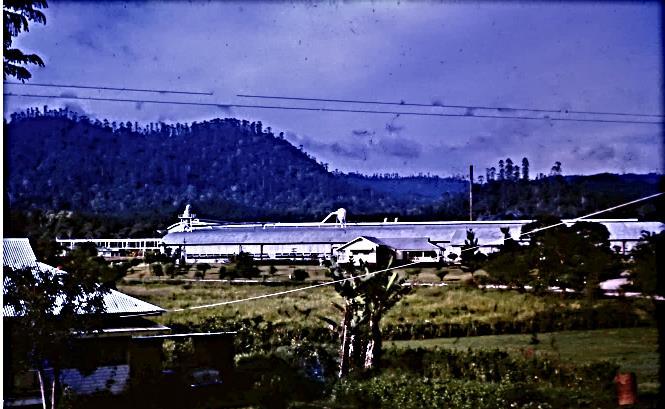
In 1954 plywood production and the export of product to overseas destinations commenced and for the past 50 years the company has been involved in the conversion of both hardwood and plantation resource to high value end products. Output rose from 2.14 million square metres on a 5 mm basis in the first year to 3.34 million square metres valued at some A$2.9 million in 1969-70. FAO76 reported: that a major development in Australian New Guinea has been the establishment of the plywood factory at Bulolo, which commenced operations in January 1954 and it now producing substantial quantities of first-cl ass plywood, the bulk of which is being exported to America and Australia.
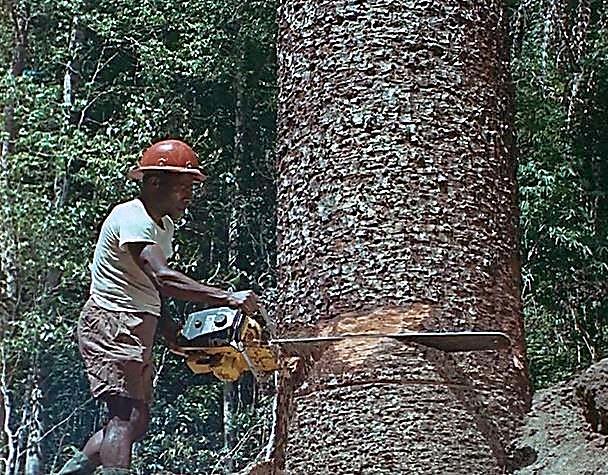
Kinoi, a senior and skilled crosscutter, felling a klinki pine. Kinoi was a Sepik elder. Watut –Bulolo ridge.
Photo credit Ross Lockyer 1969 CNGT Bush boss and forester.
Snigging a log to the Plymill. Source. Annual Report to the UN re New Guinea 1/7/1953 to 30/6/1954.
Loading logs for the Plymill. Source Dept of Territories 1959.
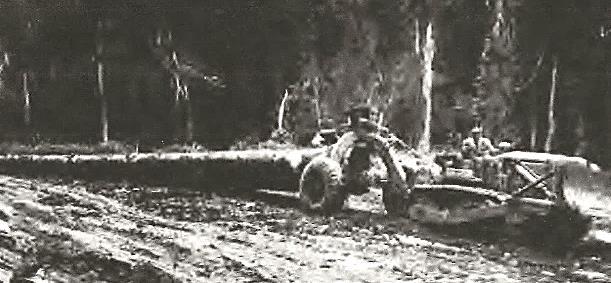
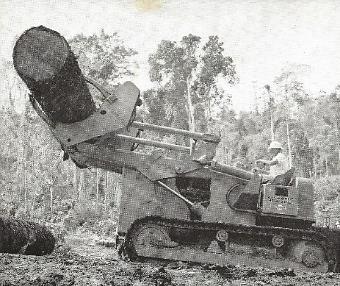
76 FAO Unasylva 1955 Vol 9 No 2 News of the World.
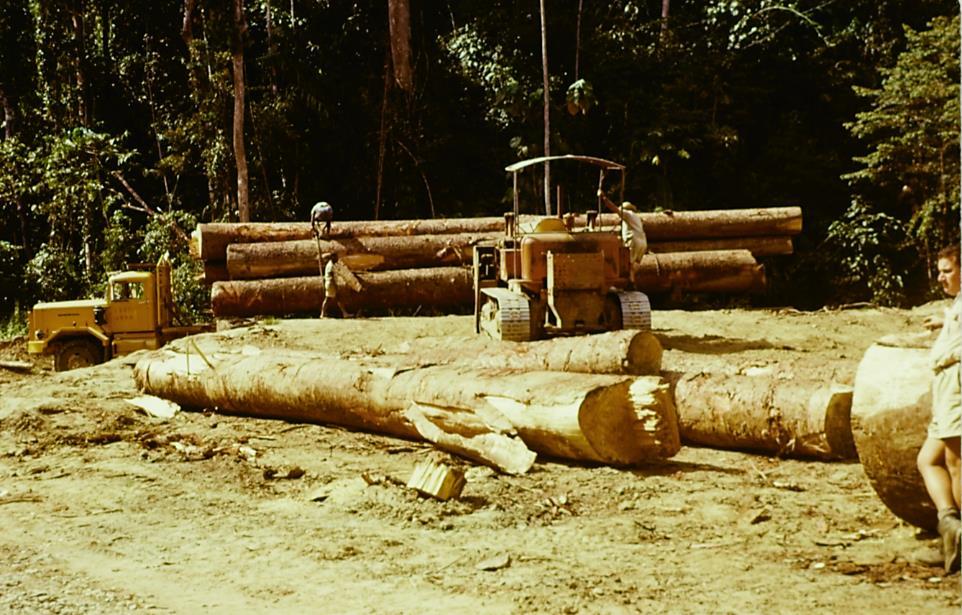
Log Loading Bulolo April 1965. Source University of Queensland Kathleen Vellacott-Jones Collection.
Transporting Logs Bulolo 1962.
Photo credit PNGAA.
Unloading Logs Bulolo Ply Mill. Photo credit PNGAA.
Peeling logs for Commonwealth New Guinea Timbers Ply Mill
1960. Photo credit PNGAA.

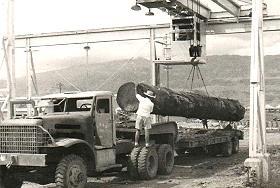
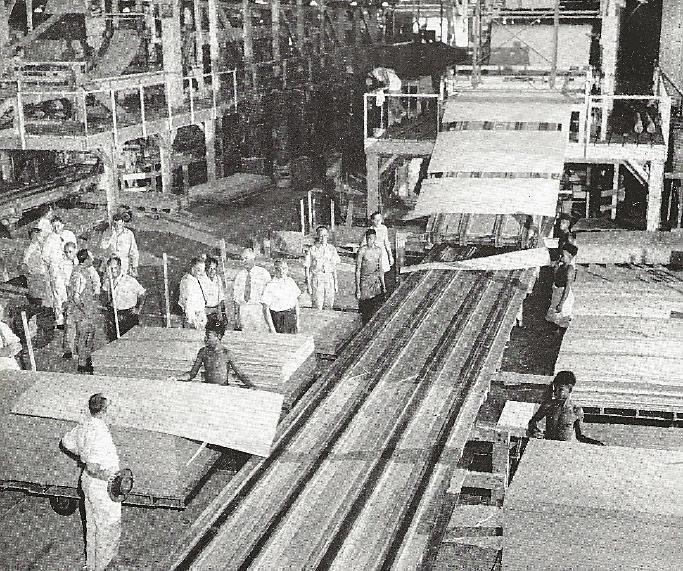
Interior view of the Commonwealth-New Guinea Timbers Limited (CNGT) Plywood Factory at Bulolo. Source Department of Territories 1959.
Transporting plywood Bulolo to the coast.
Source. Annual Report to the UN re New Guinea 1/7/1953 to 30/6/1954.
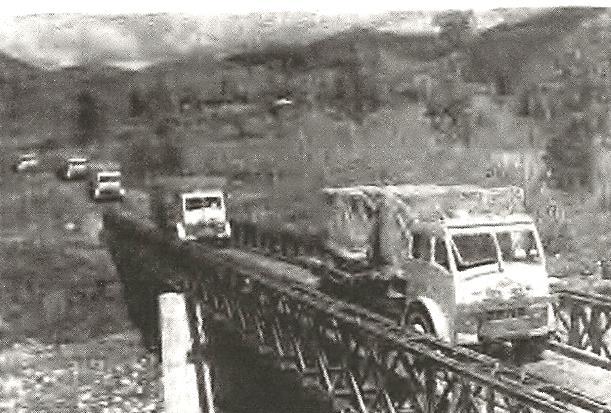
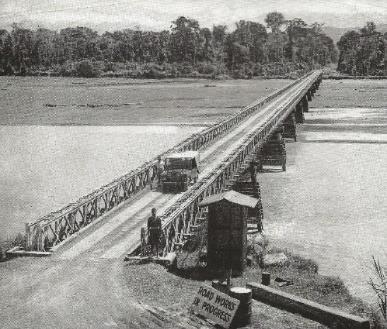
Markham Bridge. The longest bridge in the Territory, 1690 feet long spans the Markham River near Lae. Completed in 1955, it made possible the passage of heavy motor transport between Lae and the gold and timber producing area of Bulolo and Wau. Source Department of Territories 1959.
1957 Forest Policy Statement Hasluck Sir Paul Hasluck77 .
Minister for Territories 1951 – 1963
The Right Honourable Sir Paul Hasluck. Photo credit Wikipedia.

Forest Policy Statement by the Minister for Territories Hon P Hasluck MP 1957
1 Acquisition and reservation of an adequate permanent forest estate of 4 million acres (1.6 million hectares) estate within 10 years and 10 million acres in 20 years (4 million hectares.) 2 Establishment of formal forestry education at a forest training school at Bulolo about 1960 for training recruits for the Auxiliary and Third Division. 3 Establishment of a forest research institute to be established at Lae in conjunction with the Herbarium. 4 A re-afforestation program including expenditure in the Highlands for grassland reclamation. 5 Timber utilisation research into natural durability and preservation treatments. 6 Botanical collections and identifications. 7 Encouragement of a timber industry.
77 Ref: PNGAF Mag # 4 of 21/11/20 p 15

